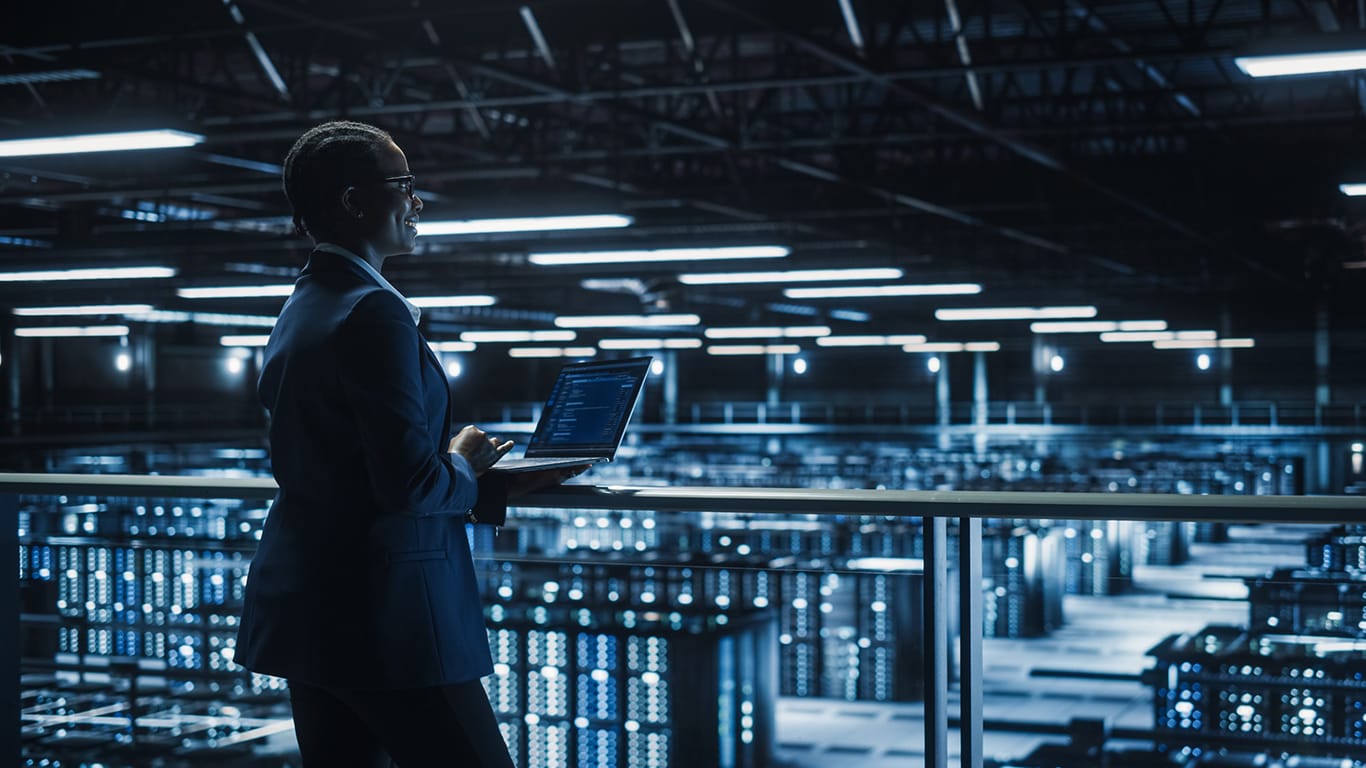Effective cooling forms the foundation of stable and reliable data center operations. Data center systems maintain optimal server temperatures, prevent overheating, and extend the lifespan of components while reducing failure risks. Choosing the right cooling system plays a critical role in ensuring continuous server performance, maximizing energy efficiency, and optimizing operational costs.
Main Types of Data Center Cooling Systems
Effective air conditioning forms the foundation of stable data center operations. Modern data centers use various systems classified by technology and heat transfer methods. Installed ventilated tiles (perforated panels) in server racks and raised floor systems can also direct airflow effectively. Below is an overview of the data center cooling systems types and their features, applications, and benefits.
Air Cooling
Air cooling is one of the most common and affordable methods for data centers. This system uses fans and air conditioners to remove warm air generated by server equipment, maintaining the required temperature.
- Features. Air conditioning is simple to implement and relatively low-cost, making it famous for small and medium-sized data centers.
- Applications. This type often suits small data centers and server rooms where high computing density is optional.
- Benefits. Easy maintenance, low cost, and scalability based on load requirements.
Using a server with air conditioning is an excellent option for ensuring optimal equipment performance. Such server racks are designed to maintain a stable temperature, which is especially important under heavy equipment loads. Consider purchasing the server enclosure with air conditioning by Sysracks, known for its high-quality server storage equipment.
Liquid Cooling
Air conditioning is well-suited for data centers with high equipment density, where traditional air ventilation cannot handle the heat load. Liquids, such as water or special coolants, circulate through heat exchangers to remove heat from components directly.
- Features. It provides high efficiency and can handle greater heat densities.
- Applications. Suitable for high-load data centers, such as those used for scientific computing and complex analytics.
Chiller Systems
Chiller systems offer a more advanced solution. They use chilled water or coolants to transfer heat from the data center to external heat exchange systems. Chillers can work with both air and liquid cooling methods.
- Features. Chillers transfer heat outside or use external resources, such as cold water, to cool the system.
- Applications. Useful in large data centers requiring high-performance and stable temperature control.
- Benefits. Flexible temperature management, suitability for challenging climate conditions, and high efficiency.
Hybrid Solutions
Hybrid cooling systems combine air and liquid ventilation elements to optimize energy costs and enhance efficiency.
- Features. Combining different cooling methods, hybrid solutions leverage each technology’s advantages while reducing energy expenses.
- Applications. Hybrid solutions work well for data centers seeking maximum energy efficiency and a reduced carbon footprint.
- Benefits. Lower energy costs, adaptability to changing conditions, and more efficient resource use.
Best Practices for Server Rack Cooling
Effective server rack heat reduction is essential for maintaining stable equipment performance and extending lifespan. Implementing proven data center cooling techniques and strategies helps achieve optimal thermal balance and prevent overheating. Below are the best practices for server rack cooling to maximize system efficiency.
- Create cold and hot aisles. Organize server racks to create alternating cold and hot aisles. Position racks «face to face» and «back to back» to separate airflow and minimize mixing warm and cold air.
- Use ventilated tiles. Install ventilated tiles (perforated panels) in server racks and raised floors to direct airflow effectively. This approach maximizes cold air delivery to racks and hot air removal.
- Use controlled fans. Controlled fans enhance airflow distribution within server racks by automatically adjusting their speed based on temperature. This setup ensures optimal ventilation while minimizing energy consumption.
- Optimize airflow distribution. Organize airflow to pass through racks without obstacles and efficiently remove hot air from the room. Use blanking panels in empty rack slots to prevent hot air recirculation.
Implementing these best practices of server rack cooling ensures effective, longer equipment life and reduced energy costs. Creating cold and hot aisles, using ventilated tiles and controlled fans, and optimizing airflow distribution maximize cooling efficiency and support reliable system performance.
The Future of Data Center Cooling Technologies
Data center cooling technologies are rapidly evolving to meet performance and energy efficiency demands. The focus is on reducing energy consumption and minimizing environmental impact. Here are key trends shaping the future of data center cooling.
- AI for temperature management optimizes air conditioning by analyzing large data sets in real-time, predicting thermal load changes, and adjusting cooling systems to maintain optimal temperatures.
- Eco-friendly heat reduction technologies. Transitioning to eco-friendly ventilation solutions, such as low-carbon fluids and reduced fluorinated gases, aims to lower greenhouse gas emissions and enhance sustainability.
- Use of natural resources. Natural resource cooling uses outdoor air to reduce energy consumption and operational costs, especially in cold climates.
- Hybrid systems. Hybrid systems combine the benefits of air and liquid heat reduction, providing flexibility and adaptability to changing workloads.
Future data center cooling will involve intelligent, eco-friendly, and adaptive technologies. AI, sustainable solutions, and hybrid systems will lower costs, reduce environmental impact, and ensure stable operations that meet increasing computational demands.




